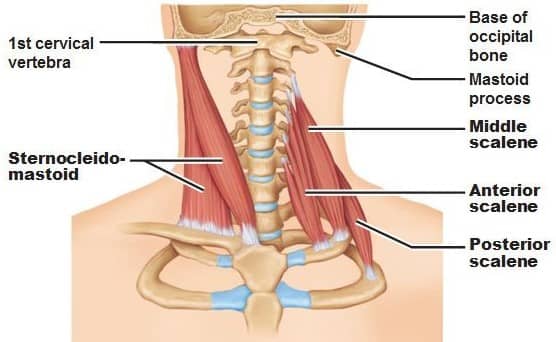Why is asthma a pain in the neck?
When we think of asthma we think about how it impacts the lungs. While the respiratory system is more affected by this condition, it also impacts the muscles we use to control our breathing.
The anatomy of breathing with asthma
The principal muscles involved in breathing are the intercostal muscles (the muscles between each rib that connect them), and the diaphragm (the big umbrella muscles under the rib cage. When we breathe normally, the ribs flair as the muscles contract and expand and the diaphragm moves up and down, forcing air in and out of the lungs.
There are also muscles called the accessory muscles of respiration. These are the:
- Sternocleidomastoid muscles
- Scalenes
- Pectoralis minor

When we struggle to get deep belly breaths, we often recruit these muscles to help us breathe. These muscles raise the shoulders and the collarbones and can help us breathe when our asthma or allergies make it problematic. However, using these muscles chronically to do the “big work” of breathing can lead to neck pain and referral headaches.
Have you noticed that you are getting increased neck, shoulder, or rib pain while you battle your asthma and seasonal allergies? It may benefit you to be assessed by a chiropractor, massage therapist, or physiotherapist. While this won’t cure your asthma, it can make the management of the secondary symptoms much more pleasant.
Want to know more?
Accessory Muscles (Science Direct)
Questions?
Email our clinic admin@triadahealthottawa.com or book online here
Thanks for visiting Triada Health Ottawa!


